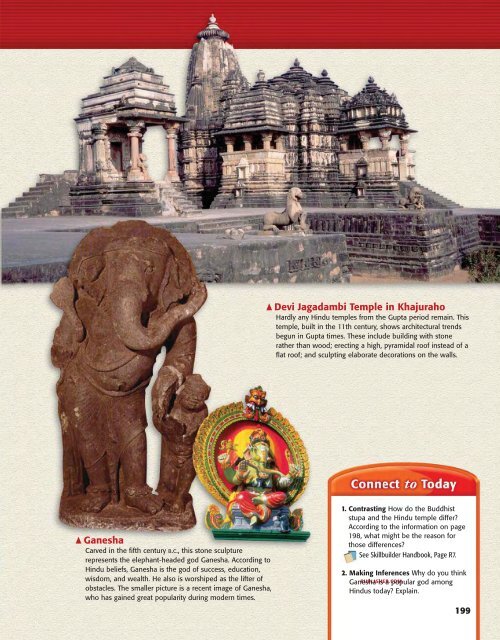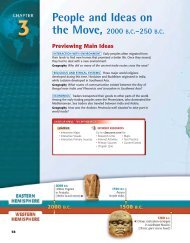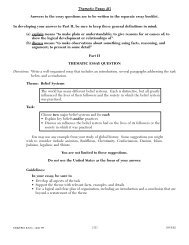India and China Establish Empires, - First
India and China Establish Empires, - First
India and China Establish Empires, - First
You also want an ePaper? Increase the reach of your titles
YUMPU automatically turns print PDFs into web optimized ePapers that Google loves.
▲ Ganesha<br />
Carved in the fifth century B.C., this stone sculpture<br />
represents the elephant-headed god Ganesha. According to<br />
Hindu beliefs, Ganesha is the god of success, education,<br />
wisdom, <strong>and</strong> wealth. He also is worshiped as the lifter of<br />
obstacles. The smaller picture is a recent image of Ganesha,<br />
who has gained great popularity during modern times.<br />
▲ Devi Jagadambi Temple in Khajuraho<br />
Hardly any Hindu temples from the Gupta period remain. This<br />
temple, built in the 11th century, shows architectural trends<br />
begun in Gupta times. These include building with stone<br />
rather than wood; erecting a high, pyramidal roof instead of a<br />
flat roof; <strong>and</strong> sculpting elaborate decorations on the walls.<br />
1. Contrasting How do the Buddhist<br />
stupa <strong>and</strong> the Hindu temple differ?<br />
According to the information on page<br />
198, what might be the reason for<br />
those differences?<br />
See Skillbuilder H<strong>and</strong>book, Page R7.<br />
2. Making RESEARCH Inferences LINKS Why do you think<br />
Ganesha PUBLISHER.COM is a popular god among<br />
Hindus today? Explain.<br />
199
















